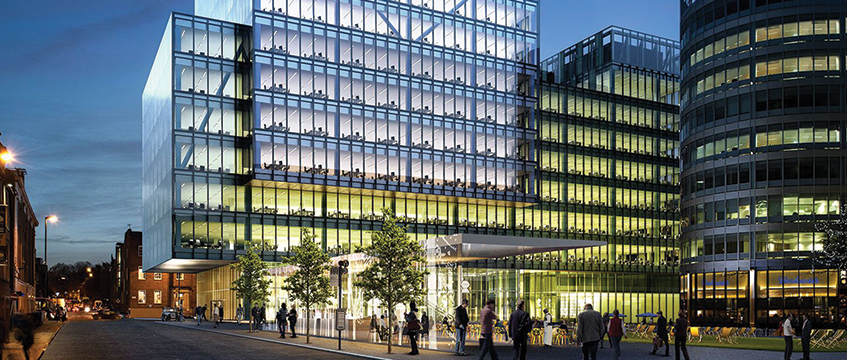“We might be overcooking the market,” an office agent in Manchester told me a few weeks ago. Rents have risen to unsustainable levels, he said, and have to drop.
Why? After all, two facts on the Manchester market are trotted out on a daily basis: there’s practically no prime space left, and the city routinely achieves record levels of take-up. As I write, the last two vacant floors of Schroders’ No 1 Spinningfields (pictured) are being fought over by tenants that are willing to pay a record city centre rent. According to some involved in the discussions, there’s hope they will achieve rents of around £38 per sq ft – an ambitious 11.7% jump from the £34 set by Colliers International when it moved into NFU Mutual’s Chancery Place in 2015.
But the agent feeling the heat wasn’t talking about Spinningfields’ corner of the market (though he was understandably sceptical of those ambitions considering £35 remains Manchester’s elusive white whale). He was talking about secondary offices. That’s where the problems are bubbling away.
Let’s look at the numbers.
High availability in 2017
Grade A and B availability in Manchester city centre was at its highest level in more than a decade at the end of 2017 despite a record low level of Grade-A stock. In fact, Grade-A stock has accounted for 20% or less of that availability since 2016.
Take-up is similarly holding up, though skewed toward the most prime end of the market. So far in 2018, for the first time since 2010, less Grade-B space than Grade-A space has been leased in Manchester.
Secondary rents, however, have surged ahead. While top Grade-A rents have stalled (and even dipped), waiting for someone to break the £35 barrier, top Grade-B rents have now caught up, and both achieved £33 per sq ft this year.
There’s a considerable disparity between rents, take-up and availability, and Manchester rents overheating should be triggering smoke alarms in the kitchens of agents, investors and developers. The prime steak might be perfectly prepared but the chips are on fire.
Widening the gap
Leases at 125 Deansgate and at Landmark – the two major office developments completing next year – could widen that gap again, particularly if Manchester remains as sought-after as it appears and larger firms scramble to secure any remaining prime space.
It’s also true that the problem is slightly less acute when you look at average rents: while top rents for Grade B space have risen by 22% since 2012, average rents are up by 18.8%.
But that doesn’t solve the chip fire. The market will have to prepare for availability to bite, whether that means falling rents or further incentives to entice occupiers. That’s particularly important as Manchester contends with a growing flexible office footprint, which is making landlords and agents rethink how they market their space.
The problem paints a picture of Manchester as a divided city, where landlords across the board reap the rewards of growing popularity, but half the market is seeing the ground below them disappear. If they’re not careful, the fall will be hard.
To send feedback, e-mail karl.tomusk@egi.co.uk or tweet @ktomusk or @estatesgazette











